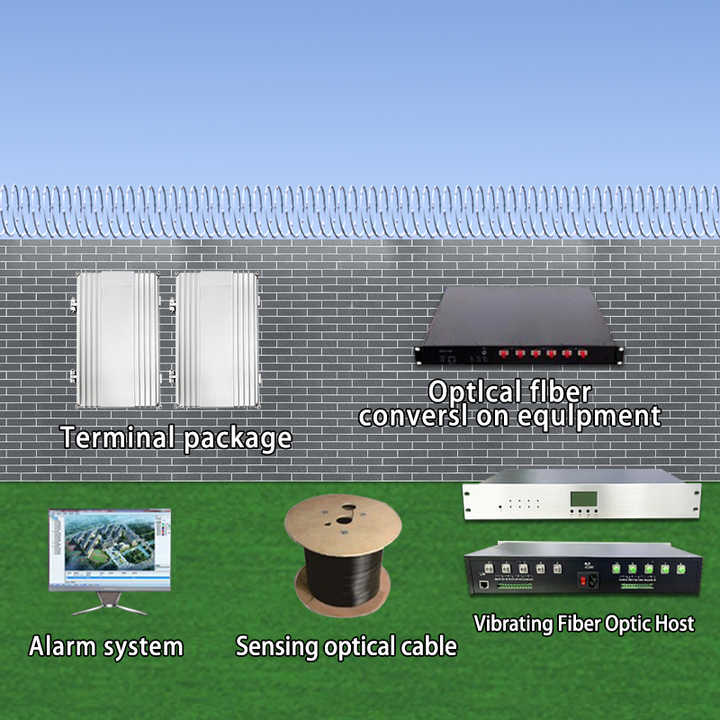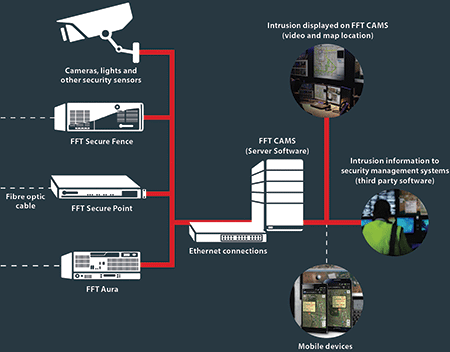Secure Your Residential Property With Reliable Fiber Optic Safety Solutions
In a period where security threats are progressively innovative, the need for effective defense solutions is paramount. Fiber optic protection systems attract attention by providing phenomenal reliability and performance, leveraging innovative light transmission technology to boost surveillance abilities. These systems not just provide immunity to electro-magnetic interference yet also assure long-lasting price performance with minimized upkeep requirements. However, the choice to buy such a service involves careful consideration of numerous factors. Understanding the intricacies of fiber optic safety can illuminate the course to guarding your home better. What aspects should be discovered to maximize your investment?
Benefits of Fiber Optic Safety And Security
Fiber optic protection services offer a variety of advantages that make them progressively necessary in today's electronic landscape. Among the most substantial advantages is their premium bandwidth capability, which permits the transmission of large quantities of data over fars away without considerable signal deterioration. This ability is particularly useful for security systems that rely upon high-def video monitoring and real-time surveillance.
In addition, fiber optic wires are inherently much more safe than typical copper wiring. They are unsusceptible to electro-magnetic interference, making them much less susceptible to hacking or eavesdropping. This boosted safety and security is vital for protecting delicate data and preserving the integrity of surveillance systems.
Moreover, optical fiber are more long lasting and immune to environmental elements, such as moisture and temperature level variations, ensuring long-term reliability and lowered upkeep costs. The light-weight nature of fiber optic cords also streamlines setup procedures, enabling better adaptability in system style.
Just How Fiber Optic Equipment Job
In contemporary safety applications, the operation of fiber optic systems counts on the concepts of light transmission through flexible glass or plastic fibers. These fibers are designed to bring light signals over cross countries with marginal loss, making them excellent for transmitting data related to security monitoring. The core of the fiber, bordered by a cladding product, ensures that light signals remain consisted of within the core through a phenomenon called total internal reflection.
When integrated right into safety and security systems, fiber optic cords can send information from numerous sensors, such as cameras, movement detectors, and alarms, to a main surveillance terminal. The high bandwidth ability of fiber optics enables the transmission of big amounts of information simultaneously, enabling real-time security and prompt feedback to possible dangers.

Sorts Of Fiber Optic Protection Solutions
Various sorts of fiber optic safety services have actually emerged to boost security and defense across different settings. One famous solution is fiber optic border intrusion discovery systems (PIDS), developed to keep track of and safeguard residential or commercial property limits through the detection of vibrations and disturbances along fiber optic cables. These systems supply real-time signals, enabling timely actions to unauthorized gain access to efforts.
Another efficient service is fiber optic video monitoring. This modern technology leverages high-definition cameras connected through fiber optic wires to transfer video information over fars away without significant loss of top quality. This setup is especially beneficial in large areas, visit this site right here such as airports and industrial sites, where typical copper cords might fail.
Furthermore, fiber optic sensors are progressively utilized for environmental tracking, identifying modifications in temperature, stress, or acoustic signals that might suggest protection breaches or dangerous conditions. These sensing units offer high sensitivity and accuracy, making them excellent for crucial framework security.

Installation and Upkeep Tips
Reliable installment and maintenance of fiber optic safety solutions are important for ensuring their optimal efficiency and durability. To start with, it is necessary to plan the installation carefully, taking into consideration the layout of the home and determining prospective vulnerabilities. Fiber optic cable televisions need to be routed firmly, avoiding sharp bends or twists that could jeopardize their stability. Use professional-grade connectors and units to ensure robust connections and security from environmental variables.
During installation, it is recommended to perform complete testing of the system to validate that all components are working properly. Regular maintenance checks ought to be scheduled to examine the fiber optic cable televisions for any type of indications of wear or damage, along with to ensure that links continue to be safe and secure. Cleaning the ports periodically is additionally essential to avoid signal loss because of dirt or particles.
Moreover, maintaining an updated stock of installed parts and their specifications can help with much easier troubleshooting and upgrades. By sticking to these installation and upkeep tips, building owners can maximize the efficiency of their fiber optic safety and security remedies, guaranteeing a trusted protection versus possible dangers.
Comparing Prices and Efficiency
When reviewing fiber optic protection solutions, comprehending the equilibrium between expenses and performance comes to be critical (security fibers). Organizations needs to take into consideration the ahead of time investment, continuous upkeep costs, and the long-term value these systems offer. While fiber optic systems might need a higher preliminary installation price compared to typical copper wiring, their longevity and reduced vulnerability to electromagnetic interference frequently translate to reduced maintenance prices with time
Effectiveness is one more essential variable; fiber optic security systems use boosted information transmission speeds and improved integrity. They can cover larger distances without signal degradation, making them suitable for large homes or remote places. The high additional resources bandwidth ability supports sophisticated protection applications, such as high-def video surveillance and real-time tracking, which are important for thorough protection management.
Eventually, the selection in between look at here now cost and effectiveness must be guided by certain safety and security demands and run the risk of analyses. Organizations should analyze their distinct demands, thinking about aspects like home dimension, protection threats, and technological advancements. By conducting an extensive cost-benefit analysis, stakeholders can make educated choices that align with their safety objectives while making sure a sound investment in fiber optic modern technology.
Final Thought
In conclusion, fiber optic security options use substantial benefits in terms of performance, dependability, and resistance to ecological interferences. Ultimately, the adoption of fiber optic modern technology represents a forward-thinking strategy to protecting residential properties versus developing safety risks.